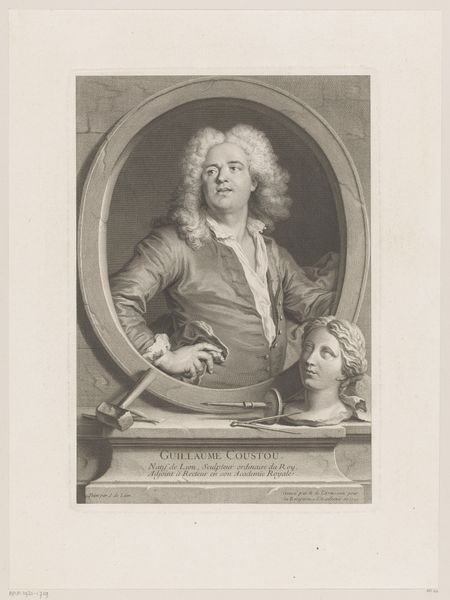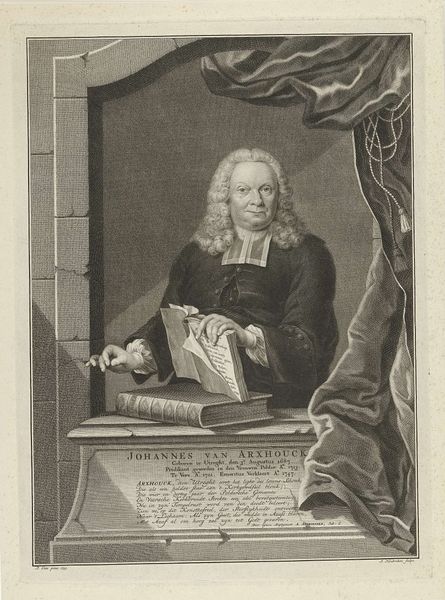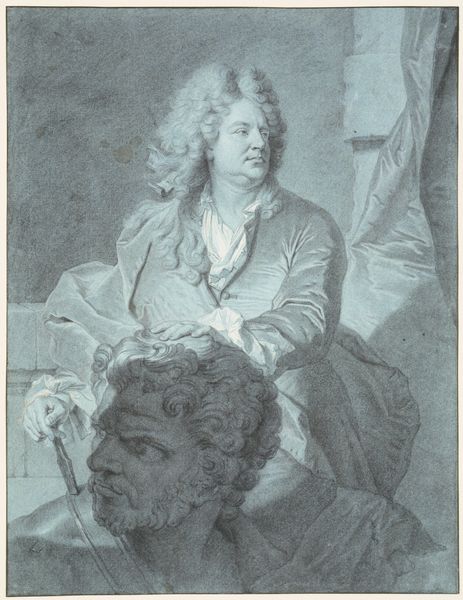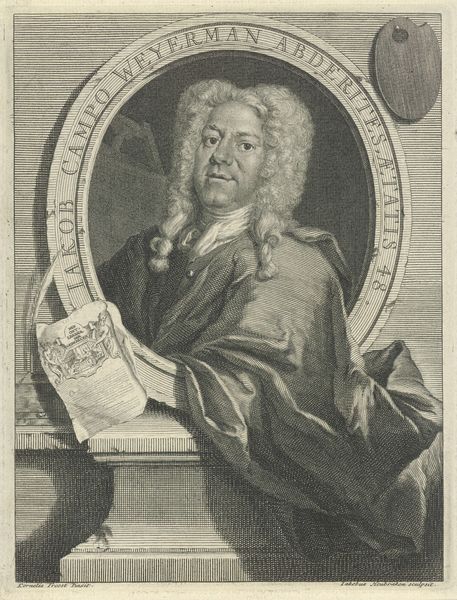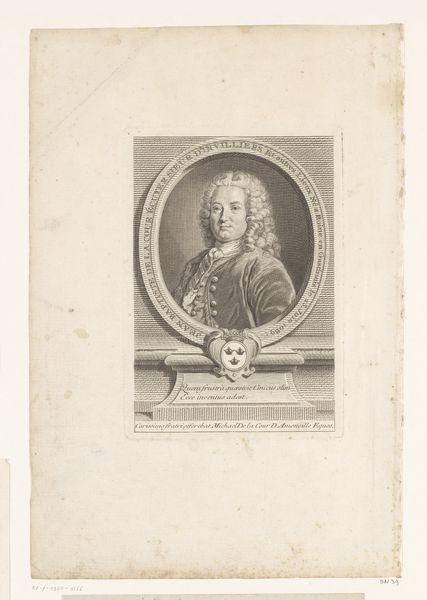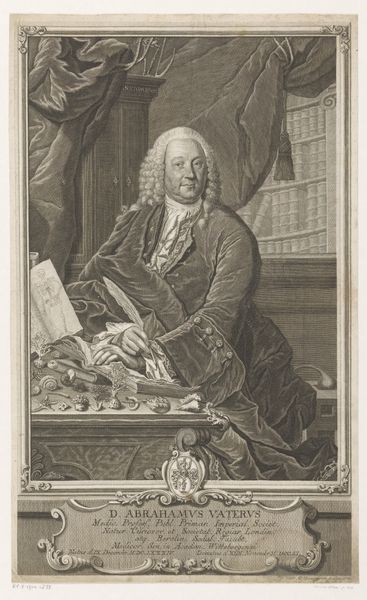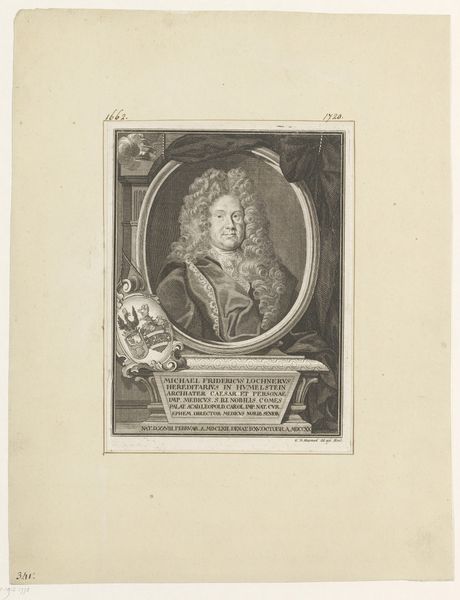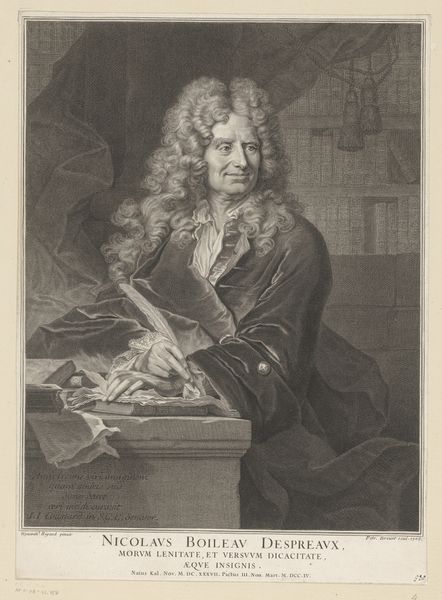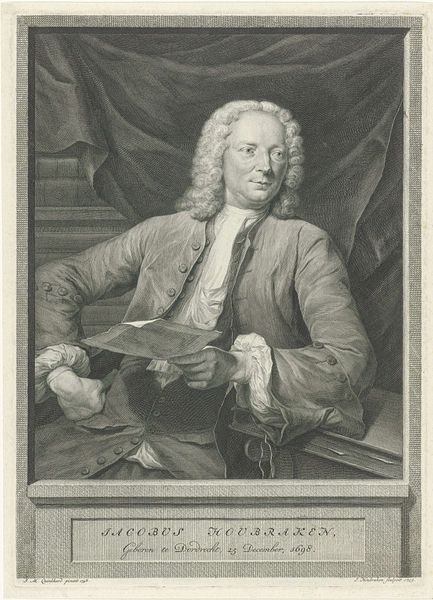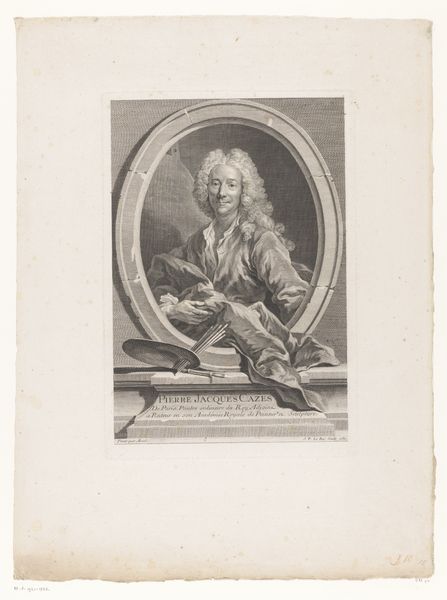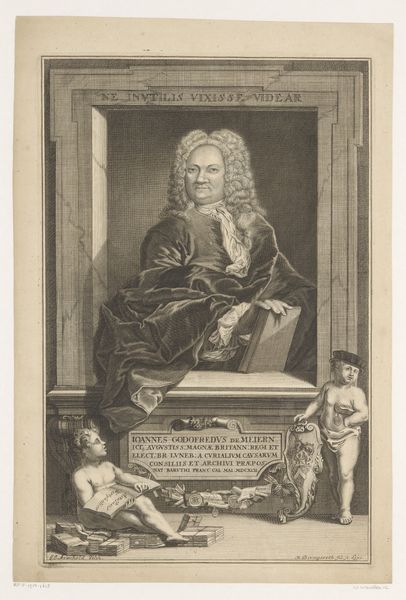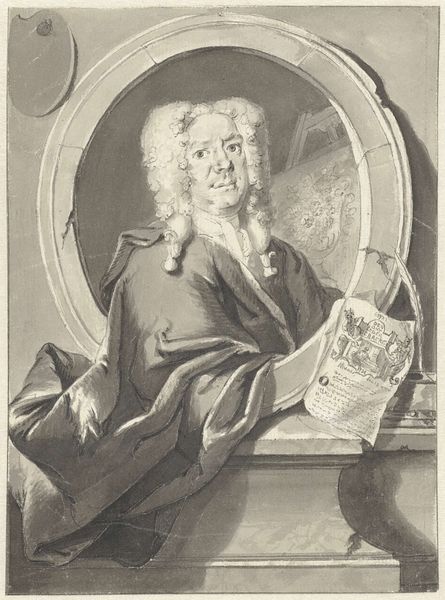
Dimensions: Sheet: 7 5/8 × 4 13/16 in. (19.3 × 12.2 cm)
Copyright: Public Domain
Curator: Here we have a print titled "J.B. Rousseau, after Aved," created around 1795, now residing at the Metropolitan Museum of Art. Editor: The man depicted looks quite pleased with himself, wouldn’t you say? The little smirk, the elaborate wig—he's definitely someone of importance. There is almost a haughty quality to it. Curator: Indeed. Prints like this served a very specific function. Reproduction and distribution of portraiture was key, even necessary, for disseminating likeness, celebrity, and maintaining certain forms of social order. Consider also the labor involved; this engraving on metal would require incredible skill, a formal apprenticeship likely, to produce these intricate lines and textures that allow it to simulate the original painting or drawing by Aved. Editor: Thinking about labor reminds me that so many objects surround him, seemingly staged. There is the lute, the mask, even a staff leaning against the window ledge! It feels performative somehow—like he is quite literally playing a role. The open books are maybe intended to signal erudition, but all these props give off a theatrical rather than intellectual impression, if you know what I mean. Curator: Exactly. The selection and placement of these items were deliberate acts of communication. We can assume this imagery connects directly with the occupation of Jean-Baptiste Rousseau, identifying him foremost as a poet and playwright. The instruments relate to the arts, signifying culture, leisure, and social status. But consider how class structure dictated these productions; engravings made images like Rousseau and their ideas accessible to a broader public. Editor: So it's a statement, a carefully constructed persona distributed widely. Though now I think of it differently, now there is something poignant to how meticulously curated his public image must have been versus the unvarnished reality of his life. Perhaps he stares just beyond us into the unknown? A neat trick, don't you think, for something carved into a piece of metal. Curator: The layering of image, social expectation, and technique definitely make it so much more than just an "old engraving style". There is so much production informing our interaction, both then and now. Editor: Exactly, these materials give us something we didn't anticipate finding; an old ghost!
Comments
No comments
Be the first to comment and join the conversation on the ultimate creative platform.
